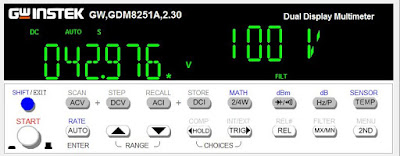Yamaha CA-1010 Integrated Amplifier
The Yamaha CA-1010 (CA-1000III Japanese Markets) was produced from 1977 to 1978 proceeding the large 2010 variant. Unique in its Class A/AB switch mode this CA series remains one of the most popular vintage integrated amplifiers today, many of the features and build qualities used was later fashioned into high end Yamaha amplifiers.
Power Supply / Protection
The Yamaha CA-1010 features a very robust power supply circuit, with a variable output depending on Class A or A/B operation. The primary driver supply consists of two 18,000MFD filter capacitors off a bridge rectifier array (also housing the Soft Start relay action). The regulated stage consists of two 1A bridge rectifiers delivering the 30/62 -/+V dual supplies. The Protection circuit is also house on this assembly. Featuring multiple lines of protection such as excessive current consumption and output shorting including the Area of Safe Operation (ASO) thermal protection circuit.
All of the electrolytic capacitors were replaced with Bipolar and low impedance, high temp (105C) Nichicon PW with an increase in operating voltages. The initial DC filtering capacitors were increased to 330MFD, DC output filtering to 220MFD and protection AC/DC filtering to 100 and 220MFD capacitances for significantly better filtering and noise reduction of the power supply.
All of the bridge arrays were replaced with Ultra-Fast, Soft Recovery Fairchild axial diodes. Small signal devices were replaced with a low noise TO-92L/92 type Fairchild with better dissipation. Large TO-220 regulators were all replaced with OnSemi and TIP modern, robust TO-220 devices, coupled with synthetic Wakefield thermal compound.
BEFORE
AFTER
Filter Capacitors + Hardware
The original 18,000MFD capacitors were replaced with new Computer-Grade Nippon Chem-Con 18KMFD capacitors. The original AC 12V array was modified to a rectified DC 8V SE source for custom multi SMD LED festoons.
-/+ DUAL SUPPLY CONFIRMATION
AF Stage (Pre-Amplifier)
The pre-amp or line-level stage features a duel JFET and differential gain stages. The stage features stepped dual tone attenuators with a defeat option. Filters include a 10K and 15z with a 12dB cutoff. A quality 4-gang volume attenuator first used in the C-1 and C-2 high-end Yamaha pre-amplifiers.
During the rebuild of this stage its important to remove the potentiometers from the PCB for proper cleaning as shown below. I also like to replace the hard-wired Volume PCB connectors to a stranded wired connection to avoid future solder connection issues.
All of the electrolytic capacitors here were replaced with a audio grade Nichicon KT/KA with an increase in operating voltages. The VD type diodes were replaced with modern axial 4148 type. All the small signal devices were replaced with TO-92/TO-92L type low noise modern Fairchild devices. Films where applicable were replaced with a high grade WIMA polypropylene film type.
BEFORE
AFTER
MM/MC RIAA EQ
Similar in design to the bigger 2010 model, the 1010 EQ stages feature both a MC and MM type gain stage around super-low noise FET integrated circuits in a cascade bootstrap CM design such as with the C-2 pre-amplifier stages. A impedance matching selector function is also available.
In the MC stage the electrolytic were replaced with bi-polar and low impedance PW and audio grade KT/KA Nichicons with an increase in operating voltages. New precision Bourns potentiometers also installed.
BEFORE
AFTER
The MM stage electrolytic were replaced with a low impedance PW and audio grade KT/KA Nichicons with an increase in operating voltages. New high-grade WIMA polypropylene films installed where applicable and VD type diodes replaced with modern 4148 axial type. All small signal devices were replaced with a modern, low noise TO-92/TO-92L type Fairchild devices.
BEFORE
AFTER
Drivers
The CA-1010 drivers are built around a switchable Class A and AB operation which means no transient switching between traditional push pull npn/pnp output designs but at a costs of efficiency and significant heat generation even at idle. Dual differentials develop the initial gain stage as well. Dual output arrays are thermally coupled to unique dissipating star-shaped heatsinks.
The differential pairs here were matched and unlike the factory, thermally coupled together for better tracking. New pre-drivers and drivers were also installed with new OnSemi devices, coupled with synthetic Wakefield thermal compound. New A/AB adjustment potentiometers replaced with precision hardware.
Differential Mapping
New low impedance low impedance, high temp (105C) and audio grade KT/KA Nichicon capacitors with an increase in operating voltages installed. New high grade WIMA polypropylene film capacitors installed. Vd diodes were replaced with modern axial 4148 type.
BEFORE
AFTER
Bias Confirmation
Class A
Class A/B
Meter Assembly
The meter calibration operates the precision output meters calibrated both dB and Watts, with a 100us rise-time the display accurately transient signal and wide dynamics without peaking. One of the issues I don’t like is the calibration positions, new pots were added to the foil side of the PCB for better future access.
Electrolytic capacitors were replaced with Bipolar and low impedance high temp (105C) Nichicon PW capacitors with an increase in operating voltages. New precision Bourns potentiometers were installed for calibration and the shield re-attached to the component side of the assembly.
BEFORE
AFTER
AUDIO NOTIZEN




























































































